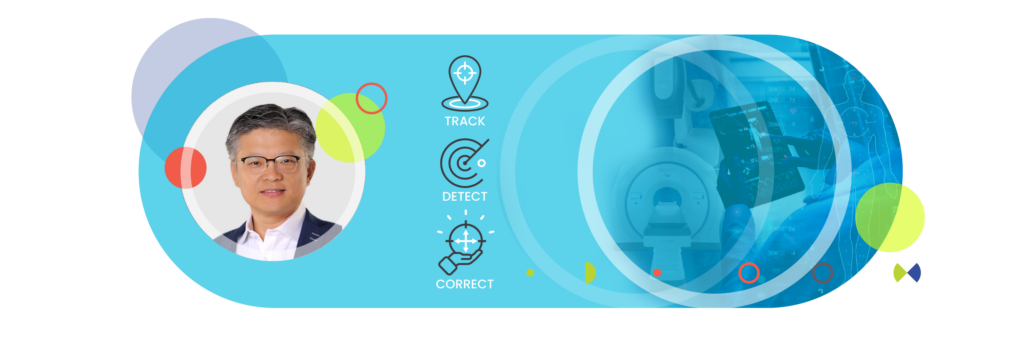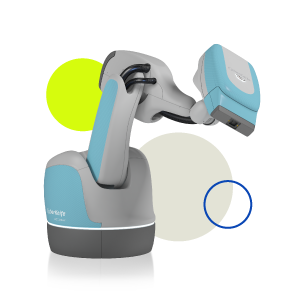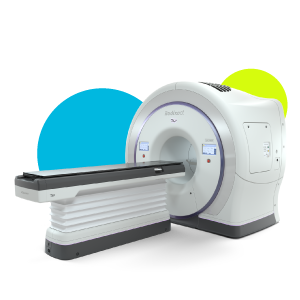Artificial intelligence (AI) is rapidly changing the way products, services and technologies are developed and delivered. The field of radiation oncology was among the first to start using AI. For over two decades, Accuray has provided a solution called Synchrony, that allows tumor motion to be corrected during radiation therapy delivery. This real-time motion synchronization enables precise treatment delivery that helps clinicians to reduce treatment margins, minimize dose to normal tissue and improve patients’ quality of life.
We interviewed Mu Young Lee, Senior Vice President of Research and Development at Accuray, to understand what AI means and how it is used in Synchrony.

What is AI?
Mu Young Lee says, “AI is the use of computerized systems to mimic or replicate certain types of human actions, especially in the area of thinking, perception and learning.”
The term AI in recent years has been used informally, particularly in the media. It usually refers to technologies involving neural networks that are developed by a process called ‘deep learning’. Neural networks have existed for a long time, but computers have only recently become powerful enough to build very complex neural networks. This now makes it feasible to build AI systems that can respond to a broad range of requests thrown at them.
How is AI used in Accuray Systems?
“Accuray has had a long history of using AI, especially in its product called Synchrony®. Synchrony is a product that automatically learns patient motion every day to track, detect and correct to compensate for patient tumor motion without human intervention. It has existed for over two decades in Accuray products, and it’s available in the CyberKnife System and Radixact System product lines,” says Mu Young Lee.
Synchrony motion synchronization technology uses an AI patient model to adapt radiation delivery in real-time to patient and/or tumor movement throughout the course of treatment. It has been specifically designed by Accuray engineers and scientists to enable our Radixact and CyberKnife Systems to:
- Observe specific anatomical motion patterns of individual patients
- Train a patient-specific and treatment-session-specific AI model
- Calculate where the targeted lesion is at a given moment in time
- Re-position the treatment beam to a target that is not remaining stationary during the treatment
“And it does this automatically based on real-time decisions by the system without human intervention,” he says.
Synchrony AI is sophisticated but unlike most AI that we hear about today
The most common type of AI that people talk about is ‘deep learning’. Deep learning is only one type of AI among many different types. Much of deep learning today is used to try to train what are called AI models on large datasets representing most of humanity or a large population. But Synchrony is different from ‘deep learning’ as Mu Young Lee reports:
“Synchrony is very different in that it only studies an individual patient. It is a patient specific AI model and therefore it’s unique in the field of medical AI. In fact, many products today have nothing like Synchrony. Therefore, Synchrony is unique in its ability to be patient specific, treatment specific, and it also learns during treatment,” he says.
Synchrony learns the anatomical motion patterns of patients and builds a mathematical model, an AI model, which allows the treatment delivery system to know where the tumor or lesion is located at all times during a treatment session. It observes the patient’s motion both internally via x-rays and externally via optical sensors to steer the beam to stay on target with the tumor without human intervention.
Mu Lee Young continues “Synchrony is unique and takes data from an individual patient, builds a patient’s specific model, which is optimized for that patient. Not only that, Synchrony also monitors the validity of the AI model throughout the treatment and will automatically relearn and improve itself during treatment without any user interaction.”
AI continues to play a role in radiotherapy at Accuray
We hear so much excitement about AI today and we expect that AI will continue to play a big role in all our products and in our services. Accuray R&D is incorporating AI technologies into our product development and we’re excited to bring it to our customers so they can bring it to their patients. Mu Lee Young says “the technology has to be in service of humanity and therefore Accuray with this long history of patient specific AI is going to continue that vision and that version of AI that is going to be optimized for each individual patient’s treatment.”









